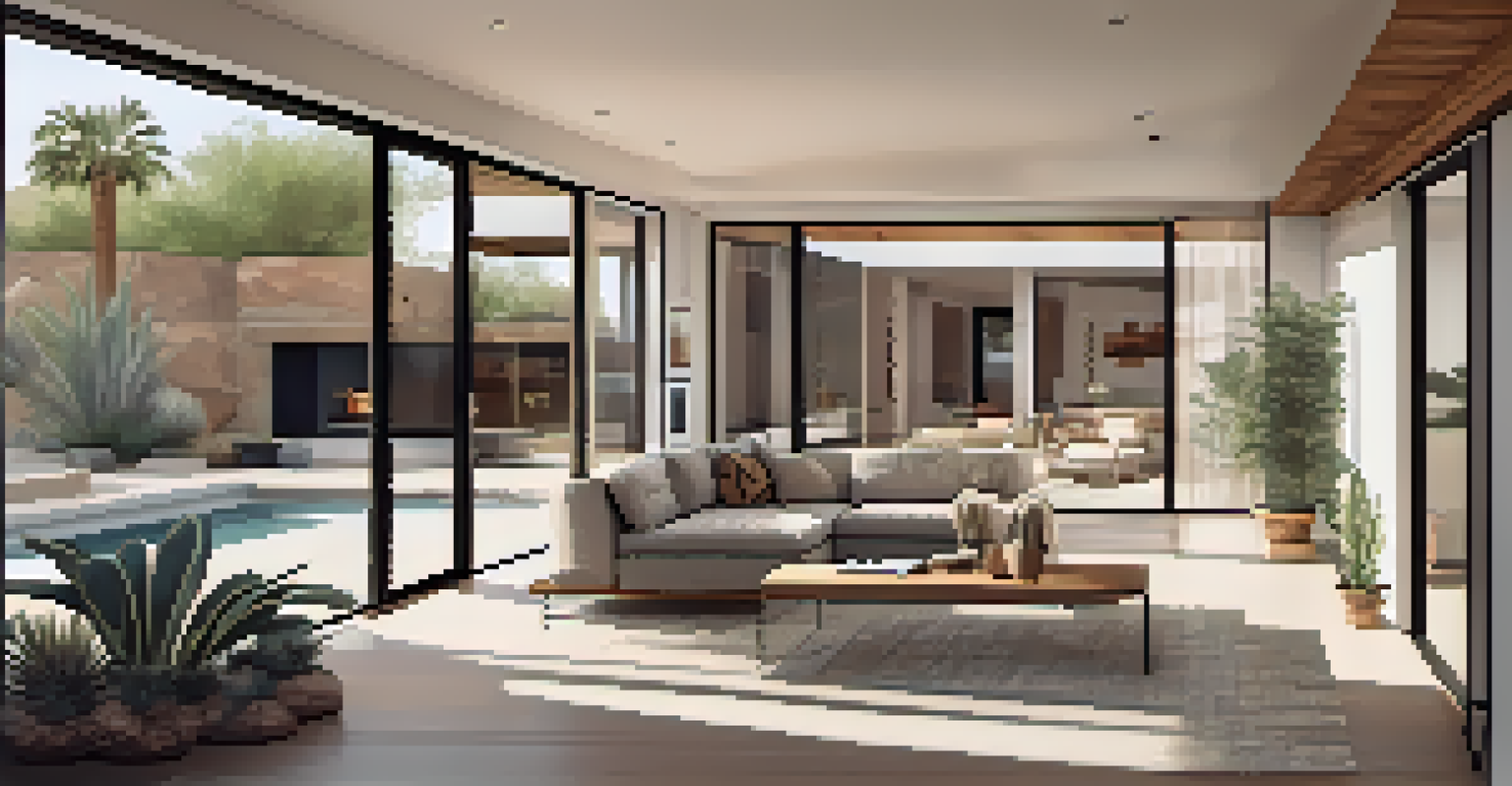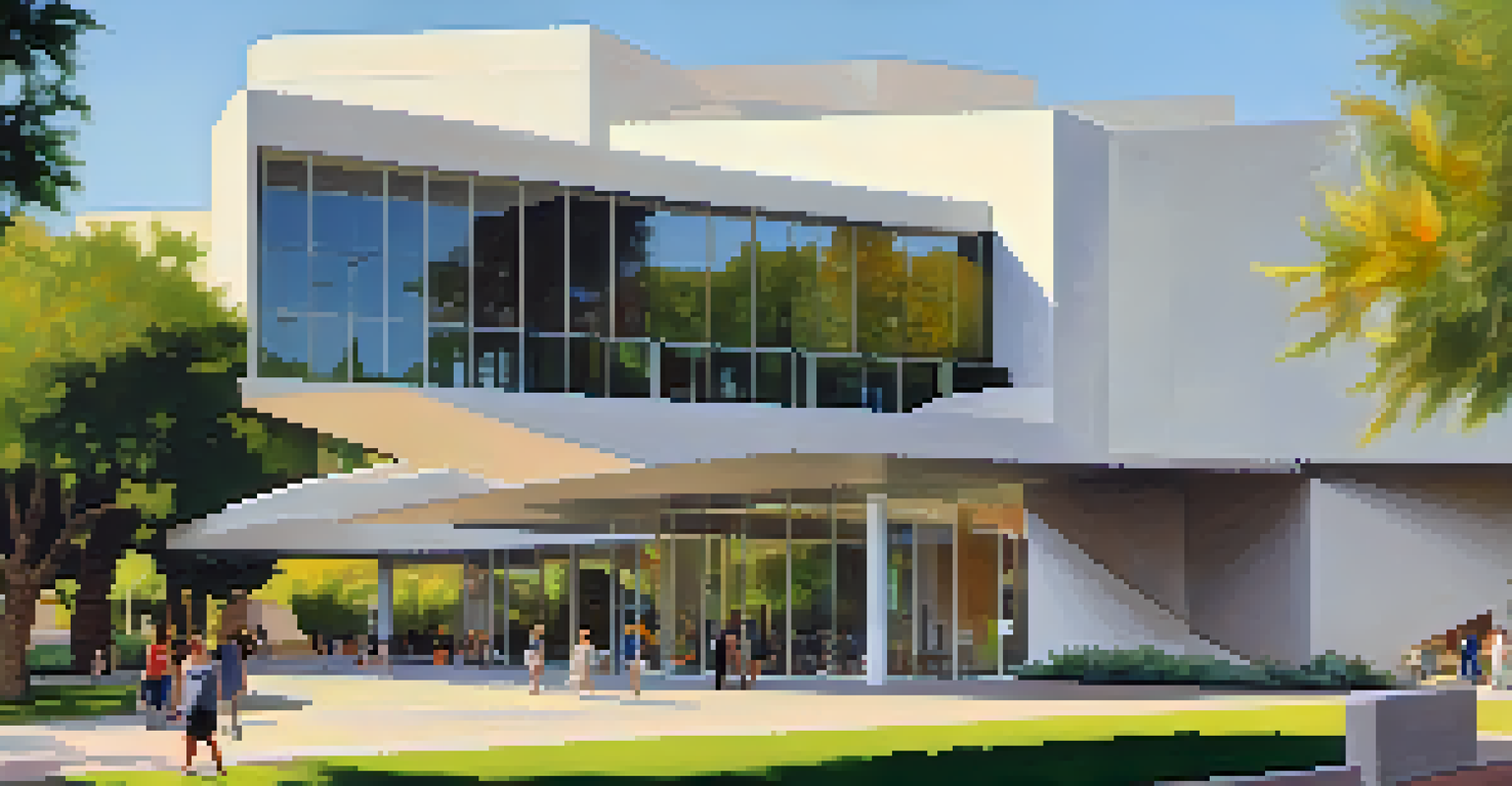Modernist Movements: Phoenix's Architectural Evolution

A Brief History of Phoenix's Architectural Landscape
Phoenix, Arizona, is a city that has witnessed significant architectural evolution since its founding in 1881. Originally a small agricultural settlement, it has transformed into a sprawling metropolis rich in diverse architectural styles. The city's growth was accelerated by the post-World War II boom, which set the stage for modernist movements to take root.
Architecture should speak of its time and place, but yearn for timelessness.
The early influences in Phoenix's architecture were heavily tied to the Southwestern and Spanish Colonial Revival styles. These foundations would soon give way to modernist principles as architects began to explore new materials and design philosophies. As the city expanded, so did the need for innovative designs that catered to a growing population and changing lifestyles.
Understanding the historical context of Phoenix's architecture is essential to appreciate its modernist movements. Each phase of development has left its mark, creating a tapestry of styles that reflect the city's character and the aspirations of its residents.
Key Characteristics of Modernist Architecture
Modernist architecture emerged as a rejection of traditional forms, embracing simplicity and function over ornate design. Key characteristics include clean lines, open spaces, and a focus on materials like steel and glass. These elements combined to create structures that felt both innovative and reflective of their environment.

In Phoenix, the modernist movement was particularly influenced by the desert landscape. Architects sought to harmonize their designs with the natural surroundings, often incorporating large windows and outdoor spaces. This approach not only enhanced aesthetic appeal but also embraced the region's climate, allowing for comfortable living.
Phoenix's Architectural Evolution
Phoenix has transformed from a small agricultural settlement into a metropolis showcasing a diverse range of architectural styles since its founding in 1881.
Additionally, modernist architecture emphasized the idea of 'form follows function,' meaning that the design of a building should be primarily based on its intended use. This practical approach resonated with the spirit of Phoenix, a city constantly evolving to meet the needs of its residents.
Prominent Architects Influencing Phoenix's Modernism
Several key architects played pivotal roles in shaping Phoenix's modernist architectural landscape. Among them, Frank Lloyd Wright stands out for his influence on organic architecture, which emphasizes harmony between human habitation and the natural world. His Taliesin West, built in the 1930s, is a stunning example of this philosophy.
The best buildings are those that are in harmony with their surroundings.
Another notable figure is Al Beadle, known for his mid-century modern designs that epitomized the era's aesthetic in Phoenix. His work showcased innovative use of materials and a seamless integration of indoor and outdoor living. Beadle's impact can still be seen in many neighborhoods, where his homes have become iconic.
Lastly, the contributions of other local architects, such as Edward L. Varney and Ralph Haver, cannot be overlooked. Their designs reflect the modernist principles of the time while adding local flair, further enriching Phoenix's architectural diversity.
The Role of Landscape in Modernist Design
In Phoenix, the desert landscape significantly influenced modernist architecture. Architects often designed structures that complemented the surrounding terrain, using natural materials and colors that blended with the environment. This connection to the landscape not only defined the buildings but also created a sense of place.
For instance, the incorporation of outdoor living spaces became a hallmark of Phoenix's modernist homes. Patios, courtyards, and expansive windows allowed residents to experience the beauty of the desert while enjoying the comforts of home. This design philosophy emphasized a lifestyle that embraced nature.
Influential Modernist Architects
Prominent architects like Frank Lloyd Wright and Al Beadle have significantly shaped Phoenix's modernist landscape with their innovative designs and philosophies.
Moreover, the use of natural light was paramount in modernist designs. Large windows and skylights not only illuminated interiors but also created a seamless transition between indoor and outdoor spaces. This focus on light and landscape fostered a unique living experience that is distinctly Phoenix.
Modernist Movements in Public Architecture
Public architecture in Phoenix also reflects modernist movements, with several landmark buildings showcasing this style. The Phoenix Art Museum, designed by architect Alden Dow, exemplifies modernist principles with its clean lines and open spaces. This structure not only serves as an art venue but also as a community gathering place.
Another significant building is the Arizona State Capitol, which underwent renovations that embraced modernist aesthetics while preserving its historic value. These efforts illustrate the balance between honoring the past and embracing the future, a theme often found in modernist design.
Additionally, public spaces like parks and plazas have been designed with modernist influences in mind, encouraging social interaction and community engagement. The thoughtful integration of art and architecture in these spaces fosters a sense of belonging among residents.
Challenges Faced by Modernist Architecture in Phoenix
Despite its successes, modernist architecture in Phoenix has faced challenges over the years. One significant issue has been the rapid urban development that sometimes disregards these historic structures. As new buildings rise, there is a risk of losing the unique character that modernist designs contribute to the city.
Additionally, climate considerations present a unique challenge for modernist architecture in the desert. While large windows and open spaces enhance beauty and light, they can also lead to energy inefficiency. Architects have had to adapt their designs to ensure sustainability while maintaining modernist principles.
Challenges and Future Prospects
Modernist architecture in Phoenix faces challenges from rapid urban development and climate concerns, yet there is a growing interest in sustainable design and preservation efforts.
Preservation efforts are crucial to protect and celebrate the modernist buildings that define Phoenix's architectural identity. Community advocacy and awareness play vital roles in ensuring that these structures are appreciated and maintained for future generations.
The Future of Modernist Architecture in Phoenix
Looking ahead, the future of modernist architecture in Phoenix is promising yet uncertain. As the city continues to grow, there is a renewed interest in sustainable design that respects both modernist principles and environmental responsibility. Architects are increasingly harnessing new technologies to create energy-efficient structures without compromising aesthetics.
Furthermore, the revival of mid-century modern styles is gaining traction among homeowners and developers alike. This resurgence reflects a desire to reconnect with the past while adapting to contemporary needs. Local initiatives and organizations are working to promote awareness and appreciation for this architectural heritage.

Ultimately, the evolution of modernist architecture in Phoenix will continue to shape the city’s identity. By honoring its past while embracing innovation, Phoenix can create a vibrant architectural landscape that reflects the spirit of its community.